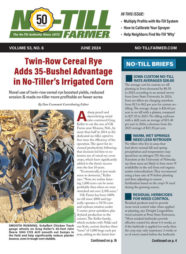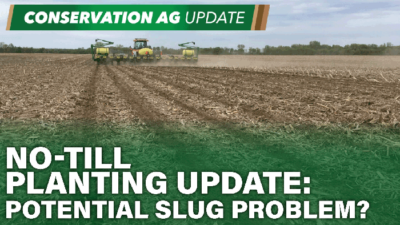There have been many reports across Iowa of corn along the edge of the fields yielding drastically less than the remainder of the field. In many cases, the yield loss is most obvious on the southern edge of the field, but it has been observed along the west, east, and north sides of fields this year.
This has left many growers wondering what caused this. Some hypothesized causes are herbicide drift or an edge effect from the hot, dry winds and stressful conditions this summer, according to Iowa State University educator Mark Westgate.
In most cases the corn plants reportedly appeared to be normal. Some noted plants were slightly shorter along the edges, but the plants were not considerably stunted. Others observations include shorter ears or barren plants. While no specific data appears to exist on this phenomenon, let’s discuss what might have happened.
Weather
It was dryer and warmer than normal in the northwest and southeast areas of the state during the critical stages of corn ear development this year. A moderate drought began to develop late in June and became progressively worse, encompassing much of Iowa by late July. It is during this period that corn ears develop and set seed.
While modern corn hybrids have been selected for better stress and drought tolerance, ear and kernel development is still vulnerable when drought occurs in June and July. Ear growth may be stunted even if the rest of the plant appears to be growing normally. Slightly shorter plants with barren ears are common symptoms of a progressively severe drought during ear development, like the one present in Iowa this summer.
Microclimate Effects
A corn crop with plenty of water will be several degrees cooler than the surrounding air during the day. This is because the water moving from the soil through the plant into the atmosphere takes energy with it as it evaporates from the leaves.
This process (called transpiration) is very important for a canopy of plants because it keeps them cool on hot days, allows them to accumulate biomass rapidly (through photosynthesis), and helps them extract nutrients from the soil.
The plants at the edge of the field, however, are at a disadvantage relative to those further in the field. Their local microclimate is affected more by the atmospheric conditions outside the field.
In Iowa, the common belief is that winds generally come from a southerly direction. Under drought conditions, these winds often are warmer and dryer than the air within the canopy. As a consequence, the plants at the south side of the field will use water faster than those further in the canopy.
The intensity of this microclimate effect would likely be greatest on the south edge of the field, followed by the west side with the afternoon sun and common southwest winds, followed by the east side with morning sun, followed by the north side which is best protected.
The impact of the ‘edge effect’ on yield is determined by the initial soil moisture available to the plants and the timing/intensity of the developing drought conditions. Plants along the edge of the field showing signs of leaf rolling late in June/early July are a good indication the local microclimate is negatively impacting ear development.
While it may be the general belief that winds in Iowa generally come from a southerly direction, that may not always be the case.
Herbicide Drift
Some have been quick to blame herbicide drift from neighboring soybean fields. It is impossible to diagnose crop injury from herbicide drift after the crops have been harvested.
As problems with herbicide-resistant waterhemp have increased, more soybean fields are treated with ‘rescue’ treatments applied relatively late in the season. Corn in adjacent crop fields may be in reproductive stages, and not display injury symptoms associated with herbicide exposure during vegetative growth. Little information is available on herbicide exposure to corn at these stages, but research with fungicide applications with the use of nonionic surfactants prior to tasseling illustrate how unexpected responses can occur.
This risk seems to be the highest from the growth stages of V12 to V14. There is no research indicating herbicide drift could cause the edge effect yield loss, but the possibility cannot be ruled out either. The only way to assess whether herbicide damage might have been involved is to walk the fields after herbicides are applied.
While we cannot pinpoint exactly what caused the lower yields along the edges of some fields and perhaps it is a combination of different factors, this phenomenon is not going unnoticed and serves as a good reminder to scout fields during the growing season.
Spend time scouting around the during the ear initiation period (V5 to V6) to see if there are stresses that might affect ear development. Also, check fields shortly after nearby fields have had a post emergence application for potential herbicide drift issues.






Post a comment
Report Abusive Comment